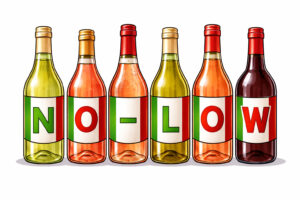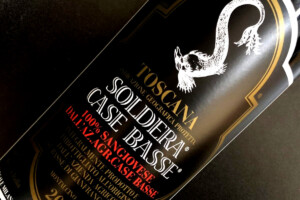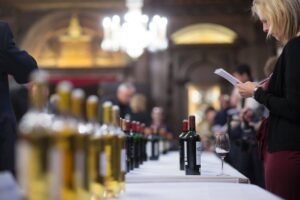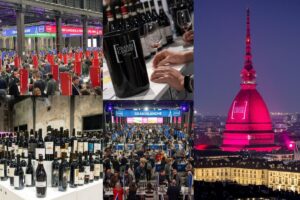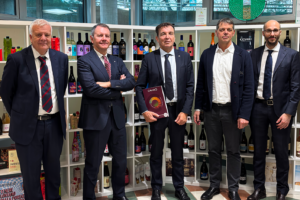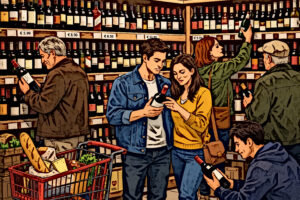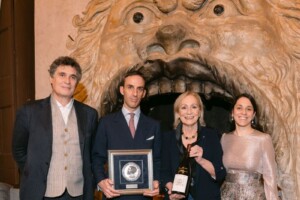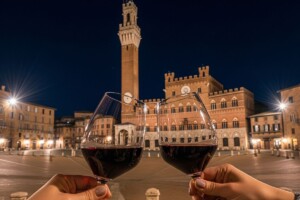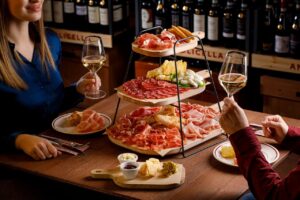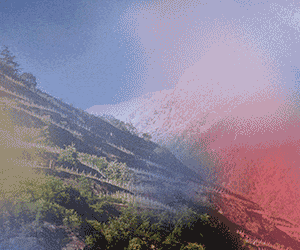The 2012 vintage red and white grapes have become wine and forecasts can now formulate the first definitive judgments. It will not be a year that will go down in history, but, then again, it will not be as weak as estimated in the summer months, when the situation, as a result of a torrid climate to say the least, seemed really to the limit.
Quantities are definitely scarce with grapes turned into wine. In some cases it’s a negative record, but this could even turn positive because the prices of bulk are rising in areas that in the recent past had seen a dramatic fall.
This harvest will be remembered mainly for its problems: drought and heat have unmistakably marked it - the heat element does not even make headlines because summer temperatures have been high at least since the 2000 harvest; having to anticipate cutting the more recently planted vineyards with less productive rootstocks; planting density and more and more reduced production strain, as well as early varieties (and clones).
But the year 2012 will be remembered for its often-unpredictable effects on the different physiological reactions of the vineyards: the older, better grown ones. And of course, on the semi-late and late varieties and different terroirs, with those historically disadvantaged, for example, exposed to the north, which changed to areals and are interesting because they are able to "resist" better to the stresses of a more and more “tropical” climate.
Many of these difficulties are well known to winemakers whose goal is producing original and inimitable wines; i.e., great wines, and are condensed, for example, as Denis Dubourdieu of the Bordeaux University has been saying for years: “Thanks to the spread of knowledge it is now possible to produce wine in different parts of the world. The necessary conditions are well known: warm and relatively dry climate, technical feasibility and regular watering”. But "the vines”, continues the Bordeaux winemaker, “are at their best if they can reach full maturity at the end of a long growing season. Unripe or over ripe grapes do not produce typical wines. The former always produce bad wines; the latter, even without faults, produce wines that are similar regardless of the source, with a limited capacity for aging. Typical and aging wines are obtained mainly from cultivated varieties to their northern limit in the northern hemisphere or southern limit in the southern hemisphere. This is the case of Merlot and Cabernet in Bordeaux, or Sangiovese in Tuscany. So uniqueness and greatness of a wine can be obtained only in extreme situations. The terroir is not a privilege, not a gift of nature, as is often heralded. It is rather overcoming a natural handicap”.
In short, the 2012 harvest could become a real "boundary", reminding us that the technical factor, both in the field and in the cellar, will become increasingly important to continue, at least in our latitudes, to strike a balance, a necessary condition to produce original, inimitable and high level wines. In the meantime, it certainly offers a varied and multifaceted landscape, where there is also room for exceptions, obviously, but in general, confirms that it is a year that will not remain in the annals as far as quality is concerned.
A fact that, while seeking to be realistic, hardly comes from a "mathematical" relationship between lack of rainfall and very hot weather, which led to loss of aromas in the grapes and photosynthesis block in the plants causing fruits to stop ripening in their phenolic stage as well as increasing alcohol content and decreasing acidity. The result? Good wines, nice, but not capable of defying time and conquering the peaks of excellence.
The whites are now being finalized, while some tanks of reds are still soaking, but now the games are up. Here are the opinions of some of the most important Italian winemakers, at the first check of the 2012 collection.
"Those who dared to wait for the grapes to rehydrate and started harvesting later”, said Leonardo Valenti, a professor of viticulture at the University of Milan and a consultant for companies such as Franciacorta of Castello Bonomi, the Venetian Paladin and the Umbran Caprai, “found interesting products. However, those who did not have the patience certainly cannot count on value. Looking at the physiology of the plant and its different behaviors was decisive. In the vineyards where there was already little balance of growth or production, the heat had the greatest effect. The results, in general”, said Valenti, “for both white and reds, are discreet, not fantastic”.
Carlo Ferrini, winemaker for the Tuscan brands Castello di Fonterutoli, Barone Ricasoli and MPS Tenimenti, the Abbruzzi brands Valle Reale, Casanova di Neri and Castello Romitorio (Montalcino), the Sicilian Tasca d'Almerita and the Trento San Leonardo, is satisfied, “given the circumstances. Of course, in some areas the early grapes went into crisis, especially in the hotter areas, but the late vines responded well with great results all over Italy. An early harvest year, but in the end, not like 2011. It will not be the vintage of the century”, concludes Ferrini, “however the quality is good, even without upward peaks”.
"All in all, although it can not be considered among the best, said Riccardo Cotarella, perhaps the best known Italian winemaker in the world, “we did get a 2012 harvest. Wines will have the characteristics of a hot vintage, but on average they will be pleasant. The thorniest issue”, continues Cotarella, “is quantity, which fluctuates between 15 and 20% less, with peaks of 30% less. There is an increase in production only in Sicily, which however comes out of a definitely bare bones 2011 production, and substantially stable in Puglia. Recent estimates of the associations, however, speak of a 3% decrease compared to 2011. I hope they're wrong, otherwise we will have to think of a different vintage ... ".
"The real tragedy of this vintage”, says the flying winemaker Roberto Cipresso, “is the decline in quantity, and in some cases yields are ridiculously low. After great efforts to conclude a difficult harvest, the volume of the product may not even offset the cost of this work. A hot year vintage but that did not appear to compromise the quality of the wines, especially those obtained by harvesting a little later”.
"In general”, explained Lorenzo Landi, winemaker consultant to wineries like Lungarotti in Umbria, Rocca delle Macìe in Tuscany, Fazi Battaglia in Marche and Cottanera in Sicily, confirms his premises.
“The wines are not bad, but the whites are a bit shy in aromas and freshness and the reds are not the most expressive. There are areas where things went better such as in Friuli, Abruzzo, Sardinia and Etna, but basically we are talking about a year not destined to go down in history”.
Vincenzo Mercurio, emerging young winemaker and consultant in Sardinia, Apulia, Basilicata and Campania, said, "the 2012 vintage was very difficult and it was necessary to “navigate by sight”, but there have been some surprises, as in the case of Taurasi. The area in Irpinia of later harvesting recovered in the process of ripening tannins, creating wines with more docile and balanced tannins. Even in Basilicata, the harvest has been somewhat “rectified” and in Calabria, Gaglioppo, especially the later harvest recovered its balance. There are interesting products, in general and the wines are pleasant but nothing more”.
Copyright © 2000/2026
Contatti: info@winenews.it
Seguici anche su Twitter: @WineNewsIt
Seguici anche su Facebook: @winenewsit
Questo articolo è tratto dall'archivio di WineNews - Tutti i diritti riservati - Copyright © 2000/2026










